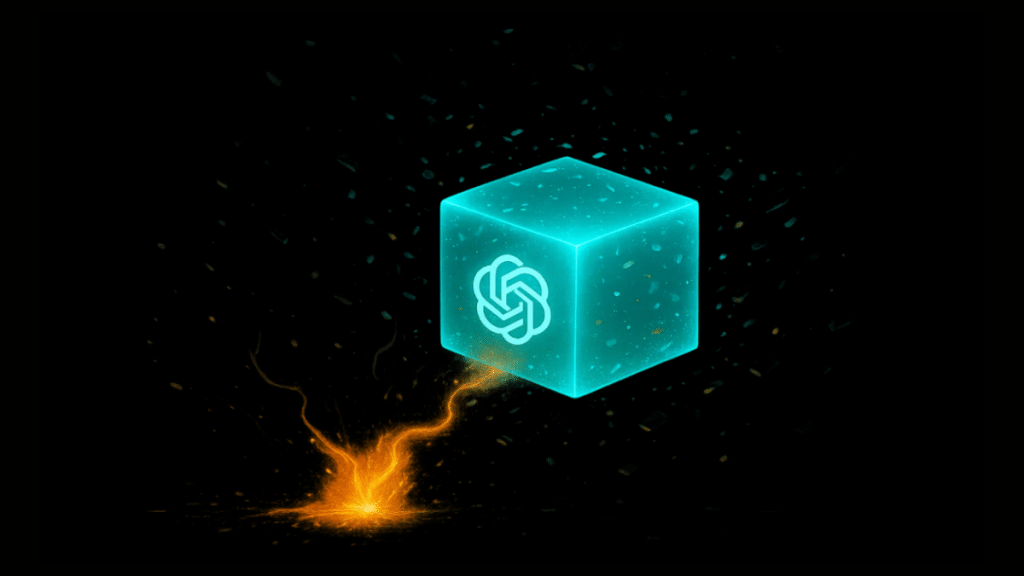From Rough Idea to Working Draft Overnight
ChatGPT wasn’t supposed to be his main tool. As a junior developer juggling freelance gigs, he relied on classic software stacks, a messy mix of Notion docs, Google Drive folders, and Slack reminders. But every time a new idea came, it died the same way: lost in clutter.
When he tried the new ChatGPT Prompt Generator, the effect was different. It didn’t just spit answers. It structured raw notes into a working product draft in hours. For someone who thought building software needed weeks of coding and planning, that felt almost unfair.
The Problem Every Developer Knows Too Well
Developers don’t fail because of ideas. They fail because of execution. His backlog was proof:
- An app for meal planning, never launched
- A Chrome extension stuck at version 0.2
- A dashboard concept buried in a Figma archive
He admitted it: starting was easy, finishing was impossible. Scope creep, distraction, and the constant shift between tools killed his momentum.
Then he asked ChatGPT one prompt that flipped the script:
“Generate a full product brief from these bullet points. Include user flows, features, and a one-line pitch.”
How ChatGPT Turned Notes Into a Product Brief
The output looked like something a senior product manager would send. It had sections:
- Target user: busy freelancers
- Core feature: automated client proposal drafts
- Stretch goals: integration with Slack, auto-invoices
It even gave a tagline: “Stop writing proposals, start sending them.”
That’s when he realized this wasn’t just content generation. It was product shaping. The prompt generator acted like a co-founder—ruthless with structure, fast with drafts, and never distracted.
From Brief to Prototype With a Single Prompt
He tested the system again:
“Write the backend API structure for this app in Node.js. Keep it minimal, include authentication, and prepare endpoints for proposals.”
Within minutes, ChatGPT spit out code blocks he could paste directly into VS Code. No boilerplate wasted hours. No Stack Overflow tabs. Just a working prototype skeleton.
By dinner time, he had a MVP running locally.
Why This Worked Better Than His Old Stack
Before, he needed days to reach the same point. With ChatGPT’s prompt generator, hours were enough.
Here’s how he compared the two:
| Step | Old Way | With Prompt Generator |
| Drafting product scope | 2 days in Notion | 30 min in ChatGPT |
| API skeleton | 1 day of Stack Overflow | 10 min prompt |
| Landing page | 1 week copywriting | 1 hr prompt |
| Testing ideas | Days of doubt | Immediate feedback |
The Hidden Workspace That Changes How You Prompt
At some point, even this workflow cracked. He was switching between ChatGPT for code, Claude for writing, and Gemini for research. Tabs everywhere, context lost.
That’s when he tried Run multiple AI models in one place with Chatronix.
Inside this multimodal workspace, everything clicked:
- Six models in one chat: GPT-5, ChatGPT, Claude, Gemini, Grok, Perplexity AI
- 10 free queries to test prompts before paying
- Turbo mode with One Perfect Answer that merged all outputs into one clean result
- Prompt stacks for saving product-generation templates
- Side-by-side comparisons to see which model explained features best
For the first time, he didn’t have to copy-paste across apps. Chatronix kept every draft, every variant, every sprint note in one thread.
Bonus Prompt He Still Uses Today
When he needed to stop tinkering and start pitching, this was the exact prompt he saved inside Chatronix Turbo:
“Generate a one-page product pitch. Include target user, core problem, solution, 3 features, and a closing call-to-action for early adopters.”
He ran it through Turbo mode. Instead of six scattered outputs, Chatronix merged them into a single investor-ready pitch. That pitch later helped him secure three paying clients—before the product was even fully live.
What Changed for Him as a Developer
The breakthrough wasn’t about replacing his coding. It was about replacing the chaos. With one structured prompt, the backlog turned into a roadmap. With Chatronix, the roadmap turned into shipped work.
He admitted something most devs won’t: he was closer to giving up than to shipping. Now he has a working SaaS, paying users, and a clear flow from idea → prompt → prototype → launch.
Why This Matters for Anyone With Ideas
If a junior developer with a half-baked dashboard idea can launch in hours, what stops a marketer, a designer, or a freelancer from doing the same?
ChatGPT’s prompt generator proved the bottleneck wasn’t skill—it was structure. And once he paired it with Chatronix, structure became repeatable.
The truth: execution is finally cheaper than procrastination.
